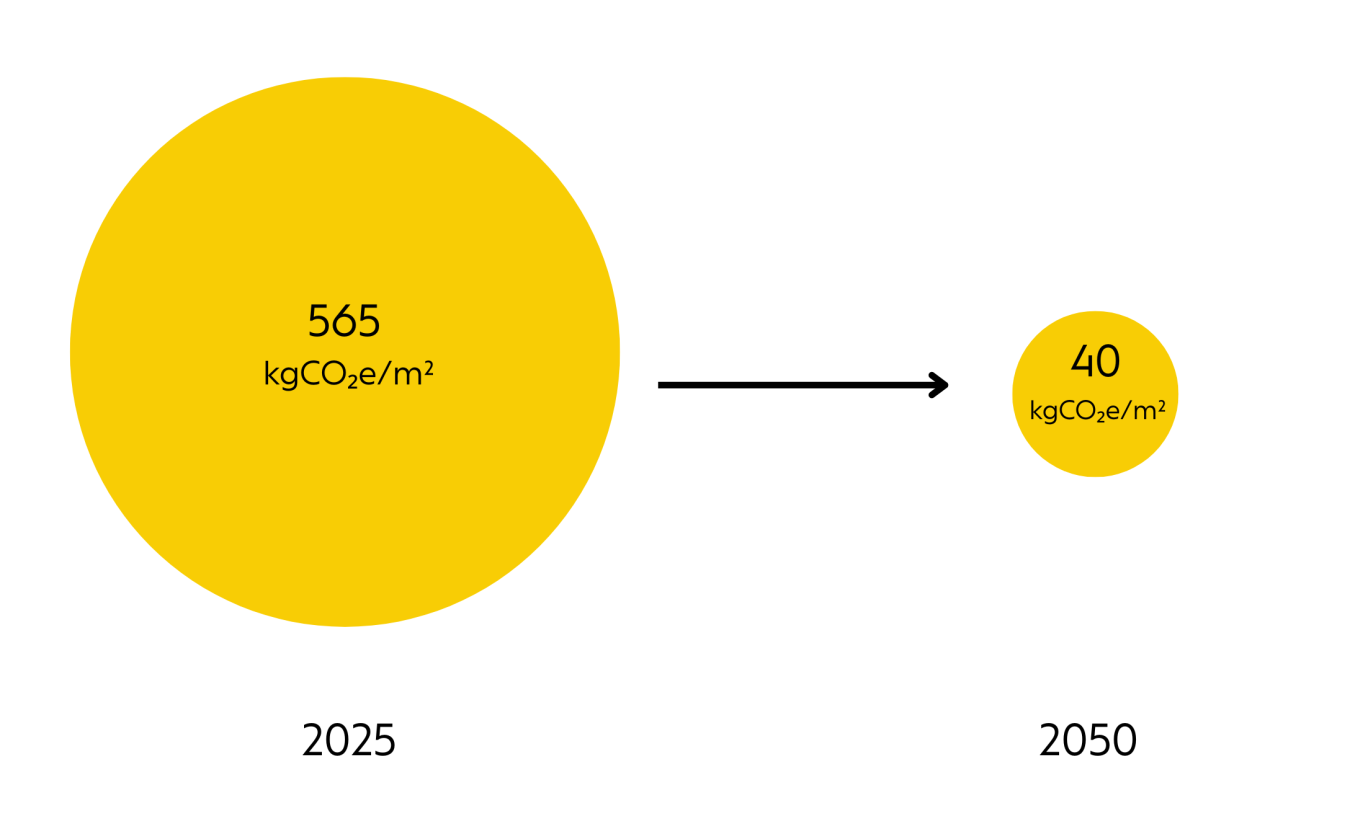
With the pilot version of the long-awaited UK Net Zero Carbon Buildings Standard (UKNZCBS) released in September 2024, we finally have an agreed methodology for defining net zero carbon buildings in the UK.
Let's unpack why the standard is important, and how your project can become one of the UK’s first ‘NZC Aligned’ buildings.
What is the new Standard?
Numerous building projects have claimed in the past to be zero carbon. However, the terms ‘net zero’, ‘carbon neutral’ and ‘zero carbon ready’, to name a few, tend to rely on offsetting and consider only as-designed, regulated energy. This leaves out important contributions from unregulated energy (e.g. appliances, computers) and embodied carbon, and doesn’t consider how the building actually performs in-use.
The new Standard sets out ambitious but achievable limits which, if achieved by the entire UK building stock, would enable the real estate sector to stay within its national energy and carbon budgets. This is required for us to reach a net zero carbon world by 2050.
It is applicable to new and existing, domestic and non-domestic buildings in all of the UK’s major sectors. Achieving this Standard means that your building will be verified as ‘Net Zero Carbon Aligned’.
Why should you have confidence in this Standard?
The Standard has been developed over two years by a cross-industry group, led by representatives from RIBA, CIBSE, UKGBC and others, and has been reviewed by over 350 industry professionals.
It combines a top-down approach to establish relevant national energy and carbon budgets, and a bottom-up approach, using benchmarking, case studies and modelling to provide technical evidence on what can be achieved by individual sectors
Will you be able to achieve ‘NZC Aligned’ status for your building?
The important point to consider is that many of the limits and targets must be met in-use, using metered data. This represents a huge progression from previous standards, which have historically been based on as-designed performance.
It is therefore vital that we focus on designing truly sustainable buildings that work from first principles, instead of designing using a ‘tick-box’ approach. Thorough handovers and post occupancy evaluation will play an important part in meeting the limits in-use.
Unfortunately, this does mean that some schemes with high unregulated energy loads in-use will not be suitable for certification.
What are the key limits, targets and reporting requirements?
The following diagram summarises the key requirements. The limits for upfront carbon and operational energy depend on the year the building is assessed and become more stringent each year.

Is offsetting required?
Offsetting is not required to achieve ‘Net Zero Carbon Aligned’ status. However, there is an option for offsetting which will enable a building to be verified as ‘Net Zero Carbon Aligned (plus offsets)’.
How do the key limits compare to previous targets?
The limits are ambitious but achievable, and generally less stringent than previous industry targets.
The 2025 upfront embodied carbon limits for residential, offices and education are equivalent to the most recent industry C- to D-ratings. However, they decrease rapidly over the next 30 years to less than half the previous A++ rating. Will this be possible? To achieve this, we will need to place much higher priority on innovative building materials and methods in the future.

The 2025 EUI limits, which include regulated energy and unregulated energy, are easier to achieve than previous industry targets for residential, significantly easier to achieve for offices and harder to achieve for schools. Renewable electricity generated on-site and used by the building is included in the EUI; up until now, this always been excluded, making the new limits yet easier to achieve.
The new residential limits for space heating, which are similar to previous targets, are now based on delivery (i.e. energy consumption) rather than demand. This means that by using a high efficiency heating system such as a heat pump, the heating demand can be much higher.
What are the next steps for your project to become one of the UK’s first ‘NZC Aligned’ buildings?
The Pilot version of the Standard can be adopted onto your building or project, starting now!
The next phase of the Standard’s development will be the Pilot testing scheme, which you can currently register interest for. Once launched, you will be able to sign your building up for selection, with applications sought from a range of sectors and project stages. This phase is anticipated to start early 2025, and feedback will be incorporated into Version 1 of the Standard, which is expected to be released late 2025.
Version 1 of the Standard will include the methodology for a third-party verifier to check that the building has met the applicable requirements. By adopting the Standard onto your project now, it will be ready to be verified as one of the UK’s first ‘Net Zero Carbon Aligned’ buildings.
Final thoughts
We believe that the Standard is a welcome and important step forward for sustainable building design. It offers clear targets and recognition for projects striving towards zero carbon.
And what separates this Standard from the rest? Defined as ‘solutions agnostic’, it sets out the performance criteria but does not mandate how these criteria should be met. The focus is on “in-use” targets; it prioritises real-world performance, based on metered data. Combined with the upfront embodied carbon targets that become more and more ambitious each year, this will help bring creative and responsive design back to the forefront.
If you’re looking for support with your first 'Net Zero Carbon Aligned' project, don’t hesitate to reach out: hello@integrationuk.com.
Written by Jennifer Williamson, Environmental Engineer